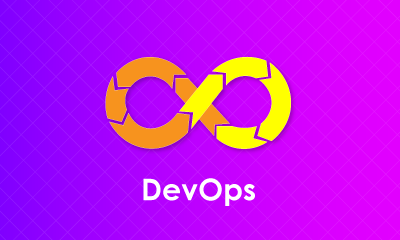Acceptance Testing
Acceptance testing for Puppet is done using Beaker. This product was developed in-house at Puppet labs and grew out of the old rspec-system tool. Documentation for Beaker is a little patchy but getting rapidly better.
Beaker can use loads of different cloud and virtualization infrastructures to create SUTs (System Under Test).
Puppet Acceptance Testing With Beaker
Test-driven development can bring a number of benefits. An approach where you write tests first makes you think about what you need to develop. Subsequent refactoring generally leads to designs that emerge in the code with high levels of test coverage.
Acceptance Testing with Beaker
Beaker can manage the temporary creation of a SUT via a hypervisor. The Puppet module under test is installed and then the tests are executed.
| Learn how to use Puppet, from beginner basics to advanced techniques. Enroll for Free Puppet Online Training Demo! |
Install Beaker
Beaker can be installed via a Gemfile
group :development, :test do ... gem 'beaker', :require => false gem 'beaker-rspec', :require => false ... end
Use bundler to install the gems
gem install bundler bundle install
Beaker Configuration
Typically Beaker acceptance tests are held in a spec/acceptance subdirectory.
A spec/acceptance/node sets subdirectory defines the machines that we want to test against. Node sets are yaml files that define the machine’s name, location, and platform. The hypervisor type is also specified. Examples for Vagrant can be found here.
module
spec
acceptance
_spec.rb
nodesets
default.yml
ubuntu-server-1404-x64.yml
...
defines
fixtures
spec_helper.rb
spec_helper_acceptance.rb
testsThe spec_helper_acceptance.rb file provides the basic configuration. The module under test is copied onto each host. UNSUPPORTED_PLATFORMS provides an easy way to de-scope tests for a particular platform.
require 'beaker-rspec/spec_helper'
require 'beaker-rspec/helpers/serverspec'
...
hosts.each do |host|
install_puppet
end
...
UNSUPPORTED_PLATFORMS = ['windows','AIX','Solaris']
RSpec.configure do |c|
proj_root = File.expand_path(File.join(File.dirname(__FILE__), '..'))
c.formatter = :documentation
c.before :suite do
hosts.each do |host|
copy_module_to(host, :source => proj_root, :module_name => 'module')
...
on host, puppet('module','install','puppetlabs-stdlib'), { :acceptable_exit_codes => [0,1] }
on host, puppet('module','install','puppetlabs-concat'), { :acceptable_exit_codes => [0,1] }
end
endAcceptance Tests
The acceptance tests describe the expected behavior and state of the SUT and are written in RSpec. In this example, a test context is defined for user (and group) creation.
| Related Article: Puppet Interview Questions & Answers |
require ‘spec_helper_acceptance'
describe 'module defintion', :unless => UNSUPPORTED_PLATFORMS.include?(fact('osfamily')) do
context 'user is created with a valid input parameter’ do
it 'should work with without errors’ do
pp = <<-EOS
$theuser = {
'auser' => { 'shell' => '/bin/bash' }
}
module { 'auser':
user => $theuser
}
EOS
apply_manifest(pp, :catch_failures => true)
expect(apply_manifest(pp, :catch_failures => true).exit_code).to be_zero
end
describe user('auser') do
it { is_expected.to exist }
it { is_expected.to belong_to_group 'auser' }
end
describe group('auser') do
it { is_expected.to exist }
end
end
endThis test context applies the manifest, expects it to execute without errors and then validates that a user is created in the correct group.
Tests can be run with
bundle exec rspec spec/acceptance
Test Execution
Beaker will initially use the specified hypervisor to bring up a SUT.
Hypervisor for ubuntu-server-1404-x64 is vagrant
Beaker::Hypervisor, found some vagrant boxes to create
created Vagrantfile for VagrantHost ubuntu-server-1404-x64
...Puppet will then be installed and the acceptance tests within spec/acceptance will be performed.
Generally, each test applies manifests within the module for a particular context.
ubuntu-server-1404-x64 $ mktemp -t apply_manifest.pp.XXXXXX
/tmp/apply_manifest.pp.ae1dqd
ubuntu-server-1404-x64 executed in 0.01 seconds
localhost $ scp /var/folders/b4/whdj5tqn1_n_2783hl5cnvch0001bn/T/beaker20141123-1076-b25en7
ubuntu-server-1404-x64:/tmp/apply_manifest.pp.ae1dqd {:ignore => }
ubuntu-server-1404-x64 $ env PATH="/usr/bin:/opt/puppet-git-repos/hiera/bin:${PATH}"
RUBYLIB="/opt/puppet-git-repos/hiera/lib:/opt/puppet-git-repos/hiera-puppet/lib:${RUBYLIB}"
puppet apply --verbose --detailed-exitcodes /tmp/apply_manifest.pp.ae1dqd
[...Puppet Logging...] ubuntu-server-1404-x64 executed in 6.22 seconds Exited: 2The tests are then performed. Beaker resolves them to an underlying operating system command in order to validate the assertion
User "auser"
ubuntu-server-1404-x64 $ id auser
uid=1001(auser) gid=1001(auser) groups=1001(auser)
ubuntu-server-1404-x64 executed in 0.01 seconds
should exist []
ubuntu-server-1404-x64 $ id auser | awk '{print $3}' | grep -- auser
groups=1001(auser)
ubuntu-server-1404-x64 executed in 0.01 seconds
should belong to group "auser"
Group "auser"
ubuntu-server-1404-x64 $ getent group auser
auser:x:1001:
ubuntu-server-1404-x64 executed in 0.01 seconds
should exist [] The hypervisor will then shutdown and destroy the SUT. Beaker reports on the results when all the tests have been completed.
Destroying vagrant boxes
==> ubuntu-server-1404-x64: Forcing shutdown of VM...
==> ubuntu-server-1404-x64: Destroying VM and associated drives...
Finished in 3 minutes 8.1 seconds
20 examples, 0 failures On-Job Support Service
On-Job Support Service
Online Work Support for your on-job roles.

Our work-support plans provide precise options as per your project tasks. Whether you are a newbie or an experienced professional seeking assistance in completing project tasks, we are here with the following plans to meet your custom needs:
- Pay Per Hour
- Pay Per Week
- Monthly
| Name | Dates | |
|---|---|---|
| Puppet Training | Dec 27 to Jan 11 | View Details |
| Puppet Training | Dec 30 to Jan 14 | View Details |
| Puppet Training | Jan 03 to Jan 18 | View Details |
| Puppet Training | Jan 06 to Jan 21 | View Details |

Ravindra Savaram is a Technical Lead at Mindmajix.com. His passion lies in writing articles on the most popular IT platforms including Machine learning, DevOps, Data Science, Artificial Intelligence, RPA, Deep Learning, and so on. You can stay up to date on all these technologies by following him on LinkedIn and Twitter.
















